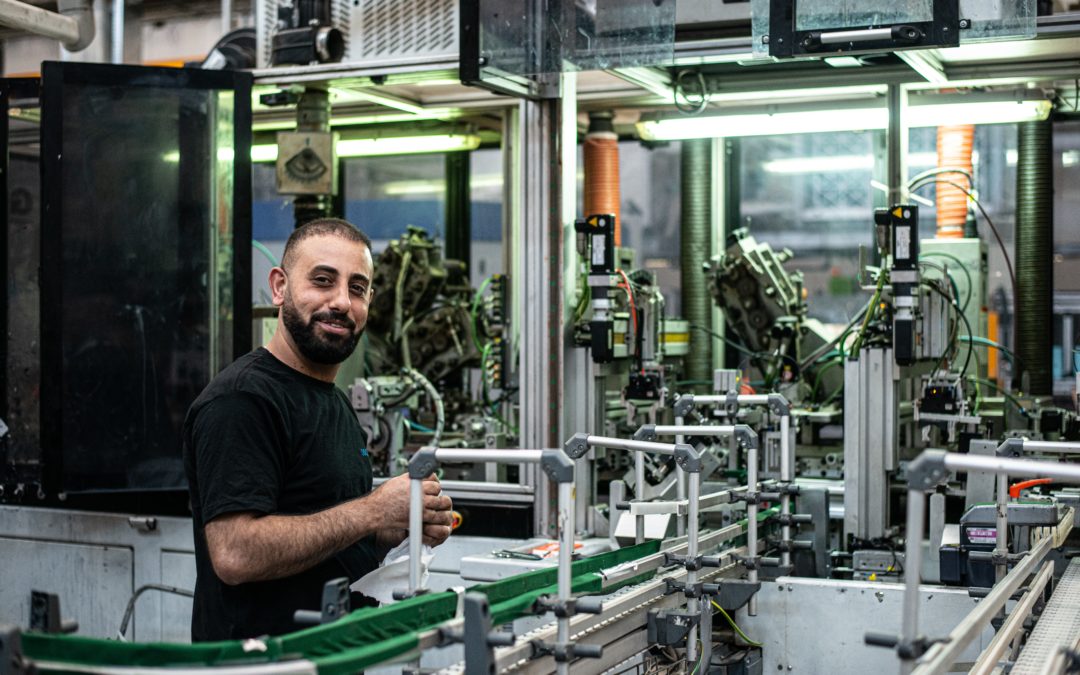Cleanroom classifications for the plastics industry regulate the cleanroom’s cleanliness and operating procedures. When designing a cleanroom for the plastics industry, the cleanroom classification plays a large role in determining which elements are included, how they are laid out, and how they make the cleanroom cleaner. Let’s take a look at the plastics industry cleanroom classifications and how the standards affect plastics industry cleanroom design.
Cleanroom Classifications for Plastics Industry Cleanrooms
Plastics industry cleanrooms are regulated by the classification standards set out by the International Standards Organization (ISO).
ISO Cleanroom Classifications
The International Standards Organization developed the set of standards by which all cleanroom industries and applications must follow. ISO 14644-1 outlines the requirements for all cleanroom environments, including plastics industry cleanrooms. ISO 14644-1 standards are separated into Classes 1-9, where Class 9 is room air and Class 1 is the cleanest possible environment.
Most plastics manufacturing cleanrooms fall under the requirements of ISO Classes 7 or 8. Some plastics manufacturing applications that are especially sensitive to contamination or involve more complex assembly may require a more stringent cleanroom classification, such as ISO Class 5 or 6. As the cleanroom environments for each class get more clean, they must meet increasingly stringent requirements for particle count, air change rates, and ceiling coverage.
Particle Count
Particle count refers to the number of particles of a certain size per cubic meter. Stricter ISO classes allow fewer particles, and also restrict the size of those particles. For most plastics industry cleanrooms complying with ISO Class 7 or 8, this would mean they cannot exceed a count of 352,000 to 3,520,000 particles that are .05μ or greater in size.
Air Change Rate
The air change rate is how quickly air is removed, filtered, and replaced within the cleanroom. In a Class 7 plastics industry cleanroom, for example, the required minimum number of air changes per hour is between 60-90. For a Class 5 cleanroom, this goes up to 400+ air changes, at which point it is better expressed as an air velocity of 40-80 ft/min.
Ceiling Coverage
Ceiling coverage refers to the percentage of the cleanroom ceiling dedicated HEPA filter/fan units, or FFUs. Most cleanrooms in Classes 7 and 8 require about 15% of ceiling coverage for filtration, which helps them reach stringent particle count and air change rate requirements.
Cleanroom Design for Plastics Industry Cleanrooms
Cleanroom classifications determine if the cleanroom is establishing control over the cleanroom environment. Cleanroom design is what enables the cleanroom to reach stringent standards.
Every component within a properly designed cleanroom should work together to achieve more control over environmental factors, support equipment and personnel, and facilitate processes within the cleanroom. For plastics industry cleanrooms, this boils down to three main factors: the type of cleanroom, the cleanroom filtration system, and the cleanroom HVAC.
Plastics Industry Cleanroom Type
To meet the cleanroom classification requirements of a plastics industry cleanroom, three types can be used. These cleanrooms can be designed to be free-standing or integrate with an existing structure, including walls, windows, HVAC and ventilation equipment.
- HardWall cleanrooms allow the highest level of control over environmental factors and can conform to even the most stringent cleanroom classifications of ISO Class 1.
- RigidWall cleanrooms are also an option for most plastics industry cleanrooms requiring a classification of ISO Class 5-8, and feature a minimalist, clear panel design.
- SoftWall cleanrooms can fit in almost any space and are fully customizable.They can accommodate cleanroom classification standards ISO Class 4-8.
The best fit for each application will depend on its specific classification requirements and industry standards, but HardWall cleanrooms, RigidWall cleanrooms, and SoftWall cleanrooms, are all durable and high-quality, and capable of supporting plastics industry projects.
Plastics Industry Cleanroom Filtration
Cleanroom filtration is usually built into the ceiling using FFUs, which change the air within the cleanroom at a regular rate, replacing it with clean, filtered air. The filtration system of a plastics industry cleanroom will work in tandem with the cleanroom HVAC to provide temperature and humidity controlled air, delivered in a powerful, thorough, and consistent airflow pattern.
Plastics Industry Cleanroom HVAC
The plastic industry cleanroom HVAC regulates temperature and humidity levels within the cleanroom environment, to not only to keep your employees comfortable, but also to keep machines functioning at optimal levels and protect sensitive products and processes within the cleanroom. Fluctuations in temperature and humidity can be detrimental to productivity, so a reliable HVAC system is a must in any cleanroom design.
Other features, such as cleanroom lighting, cleanroom furniture, and industry-specific equipment, must also be considered in the cleanroom design in order to meet cleanroom classification requirements and fit within a cohesive workspace.
Plastics industry cleanrooms should be designed to reflect the unique and evolving operations they support. The cleanroom design should comply with classification standards and incorporate all the extra features each project needs to keep productivity and efficiency up, while minimizing or eliminating safety and contamination risks.
Considering a cleanroom but not sure where to start? Let Angstrom Technology help! Our professional team can design, build, and install the best cleanroom for your application and classification requirements. Whether you’re starting from scratch or adapting an existing cleanroom, we can help you make it a success.


